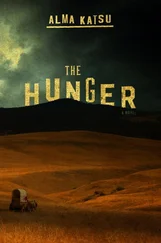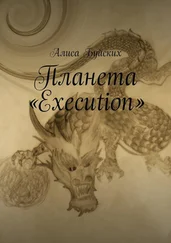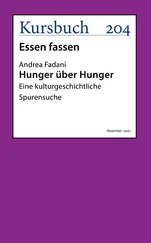Soon the officials arrived. Most of them were strangers to us. Some of them looked urban: well dressed and well fed. They were, no doubt, intellectuals. Some, obviously, were workers from factories, but the rest—the majority of them—were peasants like us: haggard, dressed in rags, and hopelessly sad. Utter silence fell in the hall as they entered. The member of the village soviet who conducted the last meeting in our Hundred and who had survived the riot appeared on the podium and announced that the new Thousander would speak.
“Here is our new Thousander, Comrade Cherepin!” he shouted.
At this time, Comrade Cherepin was already standing at the rostrum, slowly measuring the audience with an indifferent look. He was a short, broad-shouldered man, whose bald head and spectacles made him look professorial. His outward appearance was deceptive, however, as we later learned. Eventually, we came to know him as a sadist who would not hesitate to expropriate the last pound of grain from us, or throw a baby out a window into the snow.
His speech was typical of what was expected from a Communist official addressing a rural audience: his voice was quiet, his tone patronizing, and his language simple. Like the speakers before him, he discussed all the revolutions in the world history, which didn’t mean a thing to us. He made references to all the founders of Communism; he described the miserable life in the capitalist countries abroad; and finally, he proclaimed that Paradise was to be found only in the Soviet Union.
“Where else in the world do farmers have free meetings like this one?” he asked. “Nowhere!” he answered his own question quickly. “Only you have this privilege because you live in the Soviet Union!”
He stopped abruptly, as if he had run out of words. Then he changed his voice to a lower key, and continued:
“Some unpleasant things have happened in this village. Are we really to assume that they were done with your approval?”
“No!” he replied, after a pause, during which he seemed to think about something.
“Not all of you approved of what had happened! What happened was the work of enemies of the people—the kurkuls. Yes, indeed, the kurkuls have done this!”
Comrade Cherepin’s Ukrainian was intelligible if his strange accent was disregarded. Nevertheless, it was difficult for us to follow the thread of his thoughts. He asked rhetorical questions and he was evasive; he spoke about what had happened without actually saying what did happen. Of course, we knew what he was speaking about, but we wondered why he didn’t name the things specifically.
After a while, he became more specific. He told us that because we let the kurkuls influence us, and because we had done what we did, we had lost the right to live! Yes, those who oppose the Communists have no place in this world, but we still had a chance to prove ourselves worthy of living in the Communist society by joining the collective farm. With this statement, he referred to those who had not yet joined. Those who had misappropriated “socialist property,” i.e., taken their animals and implements from the collective farm, should admit their grave mistake and return it all immediately. Those of us who were seriously thinking about leaving the collective farm for good should send a written request to the Board of Managers. He also informed us that only horses and agricultural implements would be collectivized. Members of the collective farm would have the right to retain their dwellings, their cows and small animals such as hogs, goats, sheep, and fowl as their own possessions.
And finally he gave us his warning: “Let it be known once and for all that if anyone raises his hand against the Communist Party and the Soviet Government, his fate is certain death!”
But that was not the end of the meeting. Comrade Cherepin, upon finishing his speech, had one of his propagandists read Stalin’s new article, “Reply to Comrade Collective Farmers,” dated April 3, 1930.
According to this article, the permission given to farmers to leave the collective farms was not the sign of abandoning the policy of collectivization. It was merely a matter of tactics. He maintained that, like a shooting war, the war against the class enemies could not be successfully waged without firmly securing the positions already gained, regrouping the forces, providing the front with reserves, and bringing up the rear. Stalin stated that “only dead souls leave the collective farms” also, that those leaving the collective farms are hostile to Communist ideology; but that not all those leaving the collective farms are hostile or dead souls. They are farmers whom the Communist Party failed to convince in the righteousness of the Communist cause “but whom we will, no doubt, convince tomorrow.”
Stalin also announced in this article that the government decided to exempt all the collectivized draft animals from taxation for a period of two years. Cows and small animals such as hogs, goats, sheep and fowl were also exempt from taxation regardless of whether they were in a collective farm or in private possession of collective farmers. That meant that those who had planned to withdraw from the collective farm should think twice before they did it.
The meeting broke up shortly before midnight. It was raining outside and very cold. On the way home, we made the decision to remain in the collective farm. There was no other choice.
Contrary to our expectations and the promises given by the Party representative at that meeting, no serious changes for the better took place in our lives after the riot. The forcible collectivization was renewed and intensified, and the taxation in kind and money continued with new zeal and vigor.
Our village was completely collectivized sometime at the beginning of 1931. But this early completion of collectivization did not mean that our villagers accepted the system of collectivized agriculture willingly. They never did. Our village was half ruined; more than one third of our entire population was physically exterminated or banished from the village. Any food we had was confiscated. By the end of 1931 we faced mass starvation. There was no way to survive but to stay in the collective farm where we had been promised some food for our daily work.
Yet the struggle of the farmers against collectivization did not terminate with our forced joining of the collectives. On the contrary, we became even more stubborn in the following years. During the harvest of 1930 and 1931, the government used the newly organized collective farms to expropriate as much of the grain and other agricultural products as it wanted. There was talk in our village that more than three quarters of the total crop of 1931 had been taken by the government. We heard that in some neighboring villages the whole crop had been taken. It was easily done, without any opposition. There was no bargaining over the price. It was the government who set the prices, not the farmers.
As one would expect under such circumstances, our villagers had no interest in working in the collective farm. Consequently, the crop acreage was greatly reduced, and besides that, a large portion of the crops—both grain and vegetable—went unharvested.
The fate of those animals who found themselves in the collective farms was not to be envied either. The Communist officials expropriated them without first preparing a proper place to house them, or enough forage to feed them. Consequently, many of them died from lack of food and gross neglect.
Besides this, small animals like pigs, sheep, and goats, as well as fowl, were stolen, or found their way to the dinner tables of the almighty Communist officials.
The horses especially were in a sorry predicament at that time. Communist propaganda did its best to convince everybody that horses would soon be replaced by tractors. Thus the horses suddenly became unwanted at the collective farm as useless eaters. It seemed that in the fall of 1930, nobody knew what to do with them. Finally, somebody made the decision to free them from the confines of the collective farm which could not feed or care for them. They were turned loose in the open fields and woods to roam and search for food. Soon a disease struck. The combination of sickness and lack of proper care caused the death of hundreds of horses in our village. The pattern was the same throughout Ukraine. Carcasses dotted the fields and woods. This tremendous loss posed a serious problem for the officials of the collective farms, for horsepower still determined agricultural production.
Читать дальше












